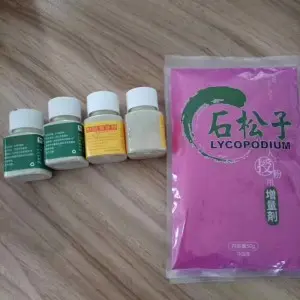មីនា . 04, 2024 14:37 Back to list
Next Time You Eat a Kiwifruit, Don’t Thank a Bee

By Andrew Porterfield

The kiwifruit, a native of China that is now cultivated worldwide, depends on efficient pollination to reach a marketable size. In fact, fruit size has a straight-line relationship to grains of pollen. Until now, however, no studies have looked at what type of pollination—insect, wind, or artificial—does the job best.
Anthony Abbate, Ph.D., research entomologist at Auburn University, and colleagues at Auburn and at the USDA’s Agricultural Research Service, have found that managed honey bees (Apis mellifera) and bumble bees (Bombus impatiens) are rather woefully inadequate in providing enough pollen to maintain commercial kiwifruit size. Their study, believed to be the first of its kind, was published in March in the Journal of Economic Entomology.
“The biggest surprise? We thought insects would do a decent job at pollination. We didn’t see that,” Abbate says. The scientists studied three types of pollination—artificial (hand spread), bees, and wind—and compared the resulting fruit development. (They also tested a fourth group of plants in which flowers were covered to prevent pollen from spreading at all, as a control group.) They found that artificial pollination resulted in fruit developing on more than 97 percent of flowers. Insect pollination was a distant second place, with just about 3 percent of flowers developing fruit.

This of course, creates an expensive problem for kiwifruit farmers. “If you’re a commercial grower, you want large fruits that will sell,” Abbate says. “They’re throwing a lot of money to pollinate a crop multiple ways. Farmers stock honey bees and bumble bees but also use artificial pollination. This starts to cost thousands of dollars per acre. You have to pay to apply the pollen, too.”
STONE PINE NUT POWDER FOR POLLINATION
To study the pollination methods, the researchers experimented in a 180-acre kiwifruit orchard in central Alabama, from April to October. Since kiwifruit plants are either male or female (males pollinate the females to produce the fruit), each row in the orchard alternated between one female golden flesh kiwifruit (Actinidia chinensis) and one of three male cultivars. Four bumble bee quads (16 colonies in total) and 12 honey bee colonies were placed in the orchard a day before the start of the kiwifruit’s bloom. The researchers then captured the bees and quantified the pollen being carried. They also carried out the pollen exclusion study, looking for the relative contribution of each pollination method.
Artificial pollination resulted in 97.4 percent of fruit set per flower, compared to 3.1 percent for insects, 0.4 percent for wind, and 0.4 percent for pollen exclusion.
Clearly, artificial pollination is by far the superior method for growing commercially viable kiwifruit. The problem with bees is not actually with the bees themselves, however. Abbate says the inadequacy of insect pollination on kiwifruit is probably an unusual situation, created by active breeding of trees with larger fruit.
Native kiwifruit is much smaller than its commercial cultivar. For native plants, insect pollination is more than sufficient for reproduction and successful (albeit small) fruit production. That advantage disappeared once fruits were increased in size through breeding.

Another problem is that bees get distracted. The kiwifruit bloom season is relatively short, about one to two weeks, and occurs in the spring in Alabama. “A lot of other flowers bloom at the same time. Also, kiwi flowers don’t produce a nectar source,” Abbate says. In fact, the study showed that honey bees carried pollen from nine other plant species besides kiwifruit (and kiwifruit constituted just 21 percent of pollen carried). Bumble bees carried more pollen but also had pollen from nine other plant species.
Together, both issues make it nearly impossible for bees to carry the approximate 4,000 pollen grains needed to produce each large kiwifruit. “The plants will have fruits,” Abbate says, “but not the optimal commercial fruit.”
-
Premium Apple Tree Pollen for Sale | Boost Fruit Set & Yields
NewsAug.31,2025
-
Pure Cherry Pollen: Boost Fruit Yields with Natural Pollination
NewsAug.30,2025
-
Precision Artificial Pollination: Maximize Crop Yields
NewsAug.29,2025
-
Premium Plant Pollen: Enhance Yields & Boost Research
NewsAug.28,2025
-
Artificial Pollination: Boost Crop Yields Efficiently
NewsAug.27,2025
-
Premium Kiwipollen for Sale | Male Kiwi Pollen Supply
NewsAug.26,2025
